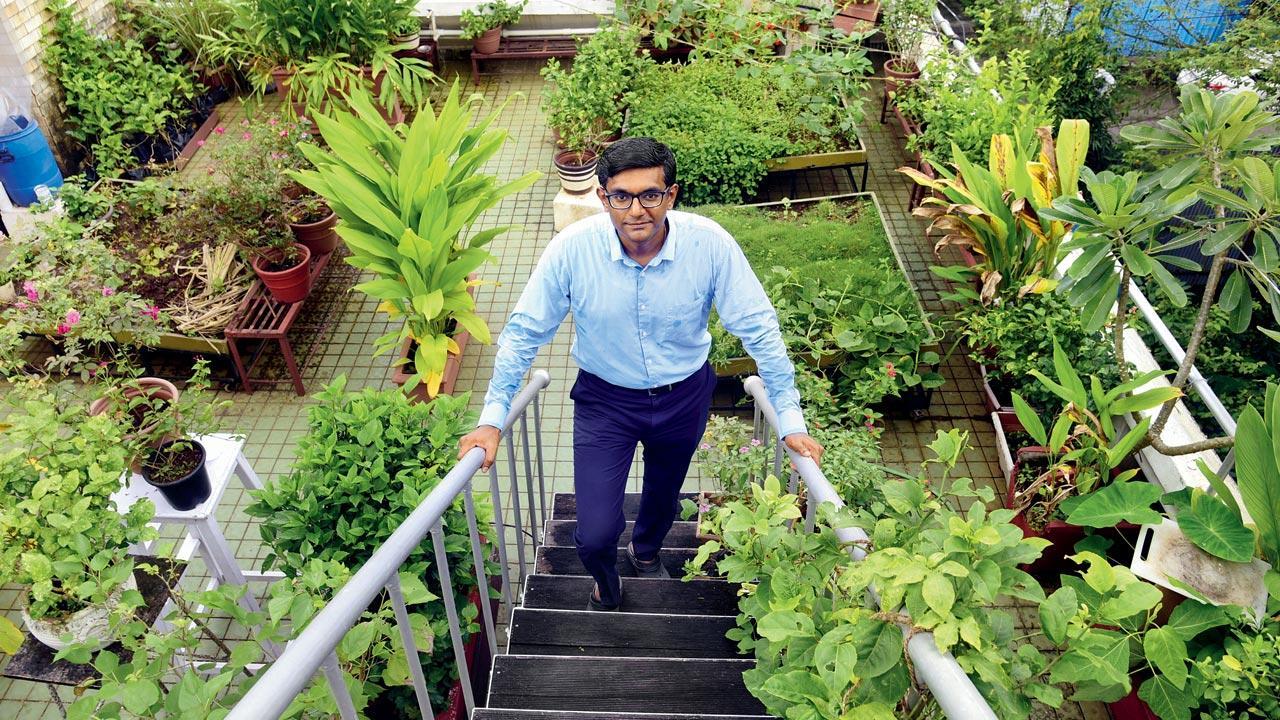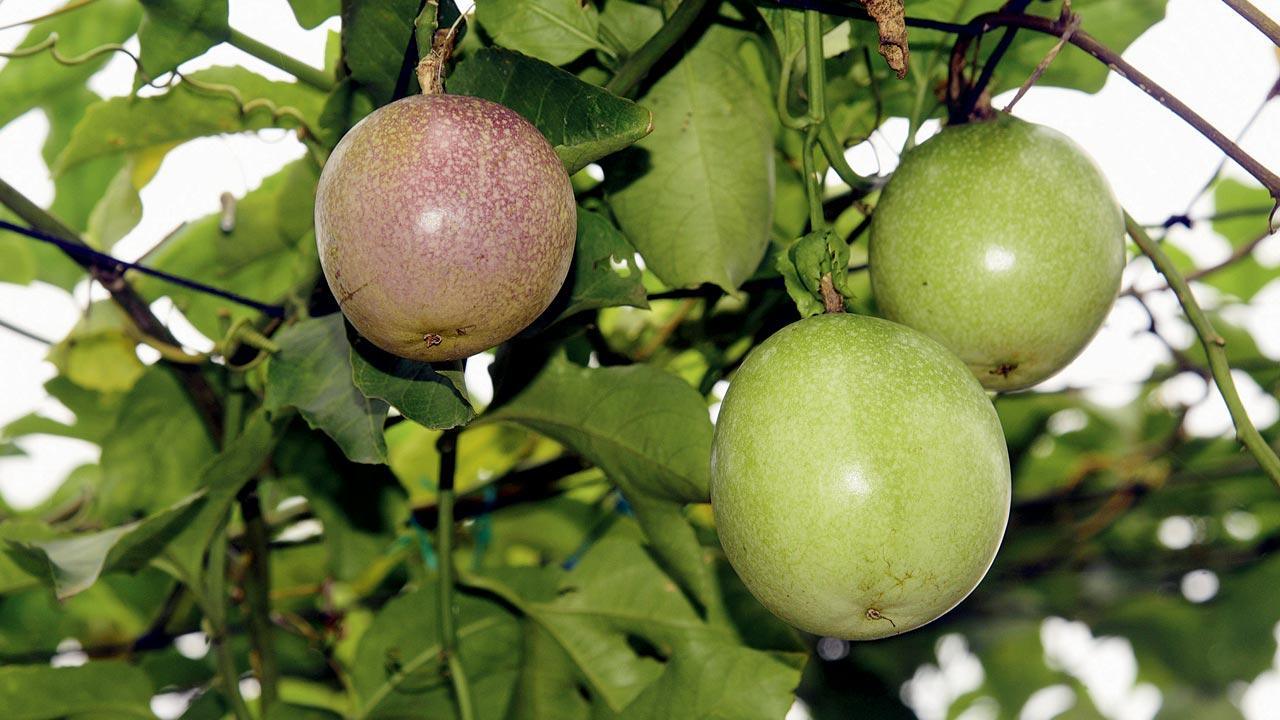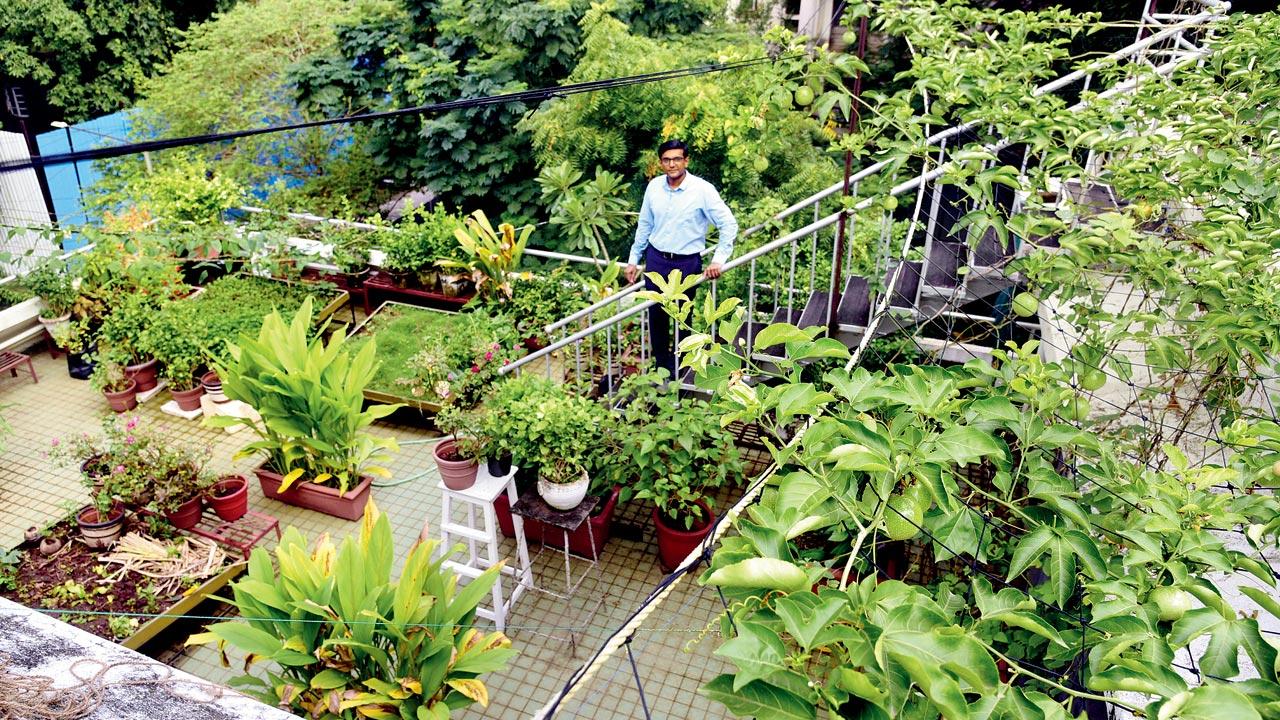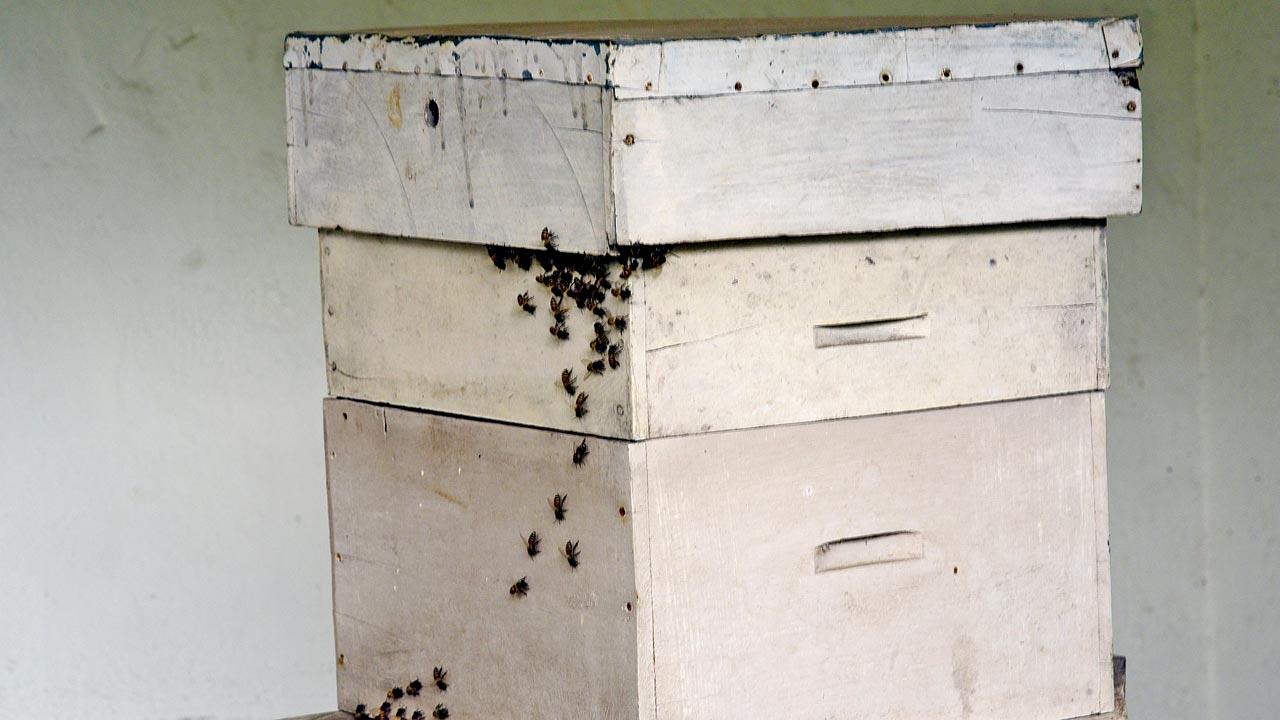A Chembur resident’s actionable micro farm model prompts the need to turn urban corners into spaces of environmental benefits

Chetan Soorenji’s terrace farm is a comprehensive and sustainable ecosystem. Pics/Atul Kamble
The chirping of birds at dawn, trickling of water down a rill or whooshing of wind through the boughs — the therapeutic effects of nature sounds have been researched and at length. Yet urbanites get to explore them sparingly. Chetan Soorenji, a corporate employee, has managed to orchestrate a symphony of such sounds in his home in Chembur; an area referred to as Mumbai’s gas chamber for its poor air quality. It started with a patra, blue fibre and metallic sheets that veil city roofs. That brings us to the “how?” Soorenji takes us through a summer when a sea of possibilities was presented to this family
of naturalists.
 Passion fruits ready for harvest
Passion fruits ready for harvest
He recalls, “Summers were becoming unbearable with each passing year. We wanted to protect our home from harsh temperatures. People use blue and green patras to cover the topmost floor, but the heat-absorbing sheets look ugly. We wanted a green cover for our rooftop without burdening the structure.” He narrowed down on a fast-growing vine that can survive local weather conditions and wouldn’t require gallons of water. Soorenji chose passion fruit after studying the plant’s needs and characteristics. An added plus point was the plant’s resilience to pests. While the vine’s growth and primary benefits resulted from intention, analysis and care, what followed next was a surprise. “We could hear bees buzzing and birds cheeping during the flowering season of passion fruit. It’s when we realised we had accidentally built a pollinator-friendly habitat,” he gleefully admits.

Currently, the urban gardener grows a variety of plants on his terrace that were picked keeping in mind a combination of host plants and pollen and nectar sources. From coconut, betel nut, ramphal, papaya, custard apple, wax apple, cherry, karvanda and jamun to sontakka, balsam, margold and juhi, Soorenji’s garden has plants to keep pace with the seasons. He also grows vegetables and leaves such as okra, cowpea and broad beans, spinach and turmeric, among other varieties.
 Soorenji’s bee box
Soorenji’s bee box
Four years ago, the 40-year-old created Forest Garden Microfarms India, a green initiative that relies on the traditional intelligence of tribal cultivators by helping them rejuvenate waste pieces of land. The platform enables tribals with the skills to create hotspots of biodiversity without dragging them out of their natural habitats. “So, without forcing them to migrate, we try to generate opportunities for livelihoods,” he says. Soorenji also pioneered beekeeping in the city, and has a bee box of the Apis cerana species since 2017. This is apart from the native bee species that visit his terrace.
Soorenji is currently knee-deep in research for a special project: “The Maan River that flows from Nashik into south Gujarat, is getting eroded. This puts indigenous river communities at risk. We are looking into local tree varieties that can be planted on its banks to preserve its course,” he concludes.
Log on to @forestgardenmicrofarmsindia
Green advice
Not everyone is born with a green thumb but that shouldn’t prevent us from committing to just one seedling at a time. Soorenji suggests, “Begin with any plant of your choice, study its requirements and tend to it for the next three to four years. After that period, the plant will take care of itself.”
Beginner’s guide
Mumbaikars can pick from these pollinator-friendly plants to grow their mini ecosystems:
. Passion flower or krishna kamal - Attracts bees, butterflies and nectar birds
. Bakula - Attracts native
bee species
. Five varieties of hibiscus -
Acts as nectar source for
bees and sunbirds
. Vinca - Attracts native bees and butterflies
. Peace lily - Serves as a
great indoor plant, purifies the air and also attracts
native bees
. Balsam - Attracts native bees
. Marigold - Repels pests
. Crepe-myrtle - Attracts native bees
. Lily - Bears beautiful flowers, acts as a host plant for moth caterpillars
. Ixora - Attracts butterflies and sunbirds
. Lantana - Attracts butterflies
. Curry leaves - Acts as a host plant for butterflies
. Mussaneda - Attracts butterflies and sunbirds
To build an aroma garden, people can plant:
. Six varieties of jasmine
. Raat rani
. Indian rose
. Gardenia
. Sontakka
. Frangipani
. Juhi
. Kamini
. Rangoon creeper
. Mogra
 Subscribe today by clicking the link and stay updated with the latest news!" Click here!
Subscribe today by clicking the link and stay updated with the latest news!" Click here!










